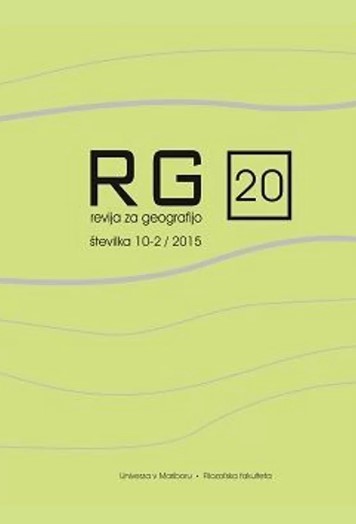Population development and population characteristics in the city of Maribor between 1961 and 2015
DOI:
https://doi.org/10.18690/rg.10.2.3946Keywords:
demographic development, natality, mortality, migrations, age structure, educational structure, Maribor, SloveniaAbstract
Author identified four stages of demographic development in the city of Maribor (Slovenia). Population growth in the 1960s was followed by stagnation of population in the 1980s and depopulation in the 1990s and after 2000. In Maribor, compared with other major cities in Slovenia, depopulation have been more intensive (between 1981 and 2008, the population decreased by about 12%). Natural growth is constantly negative from 1985 onwards, and net migration was negative between 1992 and 2007. Maribor is also showing the most unfavorable age structure of the population with the highest proportion of the elderly population and the highest aging index. Furthermore, according to the last census it lags behind other towns in the share of population with high school education, although it is the second largest university town in Slovenia. Considering the established demographic characteristics, and significant increase of the share of the population over 65 years in the next two decades, this will require new ways of organizing activities in the city and its adaption to the elderly population.
Downloads
References
Horvat, U. 2006: Razvoj prebivalstva v mestu Maribor v obdobju med letoma 1981 in 2002. Revija za geografijo - Journal for Geography, 1-1. Maribor. Str. 41-62. https://doi.org/10.18690/rg.1.1.2874
Horvat, U. 2007: Starostna sestava prebivalstva v mestu Maribor v obdobju med letoma 1981 in 2002. Revija za geografijo - Journal for Geography, 2-2, Maribor. Str. 81-100. https://doi.org/10.18690/rg.2.2.2913
Kinsella, K.; Phillips, D. R. 2005: Global Aging: The Chalange of Success, Population Reference Bureau, http://www.prb.org/pdf05/60.1GlobalAging.pdf (28. 10. 2007).
Nejašmić, I. 2005: Demogeografija: stanovništvo u prostornim odnosima i procesima. Školska knjiga, Zagreb.
Pelc, S. 2012: Demographic characteristics of population of slovenian cities in the first decade of 21st century. Revija za geografijo - Journal for Geography, 7-2. Maribor. Str. 7-24.
Ravbar, M. 1989: Novejši tokovi urbanizacije v SR Sloveniji. Dela 6. Ljubljana. Str. 218-229. https://doi.org/10.4312/dela.6.218-229
Rebernik, D. 1999: Prebivalstveni razvoj Ljubljane po letu 1945. Geografski vestnik 71. Ljubljana. Str. 41–60.
Zavodnik Lamovšek, A.; Drobne, S.; Žaucer, T. 2008: Small and medium-size towns as the basis of polycentric urban development. Geodetski vestnik, 52/2008-2, Ljubljana. Str. 290-312.
Popis prebivalstva, gospodinjstev in stanovanj 1981, 1991, 2002. SURS, Ljubljana.
Medmrežje 1: http://www.stat.si/StatWeb/glavnanavigacija/podatki/prikazistaronovico?IdNovice=1608 (1.10.2015)
Medmrežje 2: http://pxweb.stat.si/pxweb/Database/Dem_soc/Dem_soc.asp (1.10.2015)
Downloads
Published
Issue
Section
License
Copyright (c) 2015 Uroš Horvat

This work is licensed under a Creative Commons Attribution 4.0 International License.
